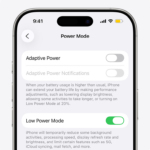When shopping for a new Mac, choices abound. Apple’s lineup includes laptops like the MacBook Air and MacBook Pro, desktops such as the Mac mini, iMac, and the high-end Mac Pro. Each model caters to different needs and budgets. Deciding on the best Mac depends on one’s usage, from everyday tasks to professional-grade computing. With their latest updates, Apple computers now boast more powerful chips, improved graphics, and increased efficiency.
Performance and technical specifications are essential factors when selecting a Mac. While baseline models handle standard tasks with ease, advanced configurations with more robust processing power accommodate demanding software and multitasking. Apple’s M1 and M2 series chips enhance performance. High-resolution displays, memory options, and storage capacities vary by model and can influence the user’s experience.
Apple’s Mac lineup in 2025 is more powerful and diverse than ever, with M3 and M4 chips across most models. Whether you’re a student, creative professional, or business user, the right Mac depends on balancing performance, portability, and price.
🔑 Key Factors to Consider Before Buying
- Purpose of Use
- Everyday tasks & students: Look for lightweight, affordable models.
- Creative professionals (video, design, 3D): Prioritize performance and GPU power.
- Developers & power users: Opt for Macs with large memory and multi-core CPUs.
- Portability vs. Power
- MacBooks → Best for mobility.
- Desktops (iMac, Mac Studio, Mac Pro) → Best for raw power and large displays.
- Budget Range (2025)
- Entry-level: $999–$1,299 (MacBook Air, Mac mini)
- Mid-range: $1,499–$2,499 (MacBook Pro 14″, iMac)
- Pro level: $2,999+ (MacBook Pro 16″, Mac Studio, Mac Pro)
💻 MacBook Lineup (2025)
MacBook Air (M3, 13″ & 15″)
- Best for: Students, writers, light creative work, everyday use.
- Why buy: Thin, light, all-day battery, fanless design.
- Price: Starting ~$1,099.
- Tip: Go for 16GB RAM if you multitask heavily.
MacBook Pro (M3 Pro / M3 Max, 14″ & 16″)
- Best for: Creatives, developers, power users.
- Why buy: High performance, mini-LED display, long battery life.
- Price: Starting ~$1,999.
- Tip: The 14″ is a sweet spot for portability + power; the 16″ is a workstation replacement.
🖥️ Desktop Macs (2025)
iMac 24″ (M3)
- Best for: Home, office, and creative users who want an all-in-one.
- Why buy: Gorgeous 4.5K display, slim design, solid performance.
- Price: Starting ~$1,299.
- Tip: Great choice if you want simplicity (computer + display in one).
Mac mini (M3 / M3 Pro)
- Best for: Budget-conscious users, developers, and home setups.
- Why buy: Compact, affordable, flexible with external monitors.
- Price: Starting ~$699.
- Tip: Pair with your own monitor for maximum value.
Mac Studio (M3 Max / M3 Ultra)
- Best for: Video editors, 3D artists, music producers.
- Why buy: Huge performance in a small form factor.
- Price: Starting ~$1,999.
- Tip: Ideal if you don’t need the expandability of a Mac Pro.
Mac Pro (M3 Ultra, 2025 refresh)
- Best for: High-end studios, scientific computing, enterprise workflows.
- Why buy: Extreme performance, PCIe expandability.
- Price: $6,999+.
- Tip: Only worth it if you need expansion slots or ultra-high-end workflows.
🧠 Essential Buying Tips (2025)
- Memory (RAM): 16GB is the new baseline. For creative work, get 32GB+.
- Storage: Start at 512GB; 1TB+ recommended for video/photo work.
- Chip choice:
- M3 → Everyday use, light creative work.
- M3 Pro → Balanced power for pros.
- M3 Max/Ultra → Heavy creative workloads.
- Ports: MacBook Pros and desktops have HDMI, SD card slots, and multiple Thunderbolt ports; MacBook Air and Mac mini are more limited.
✅ Quick Recommendations
- Best for students & casual users: MacBook Air (M3)
- Best portable powerhouse: MacBook Pro 14″ (M3 Pro)
- Best all-in-one desktop: iMac 24″ (M3)
- Best budget desktop: Mac mini (M3)
- Best for creatives & pros: Mac Studio (M3 Max/Ultra)
- Ultimate workstation: Mac Pro (M3 Ultra)
👉 Bottom line: In 2025, most users will be perfectly happy with a MacBook Air or MacBook Pro 14″. Step up to Mac Studio or Mac Pro only if your workflow truly demands it.
Key Takeaways
- Select a Mac based on personal usage requirements and budget constraints.
- Consider performance, graphics, and efficiency tailored to computing needs.
- Review the latest chip advancements and configuration options available.
Choosing the Right Mac for Your Needs
Selecting the right Mac requires understanding the various models, assessing your needs, and considering longevity and adaptability.
Understanding Mac Lineups
Apple offers a range of computers including the MacBook Air and Pro for on-the-go use. The iMac provides a powerful desktop experience. For peak performance, look to the Mac Pro. The Mac mini is a compact desktop option and the Mac Studio fits creative professional needs.
Comparing Mac Models
MacBook Air: Ideal for students and professionals needing portability. Offers value for its cost.
MacBook Pro: Suited for high-end tasks with more power. Pricier but delivers performance.
iMac: Combines a desktop experience with a sleek design. Great for office or home.
Mac mini: A budget-friendly desktop that supports bring-your-own-display flexibility.
Mac Pro: The pinnacle of power for demanding tasks. High cost reflects its advanced capabilities.
Mac Studio: A middle ground with professional-grade performance in a compact form.
Assessing Your Computing Requirements
Consider what you’ll do with your Mac. If you write papers or browse the web, a MacBook Air might suffice. Graphic designers or video editors might need the iMac or Mac Studio’s power and display quality. Match your tasks to the Mac’s specs.
Considering Future Proofing and Upgradability
Future-proofing your Mac involves looking ahead. Opt for a Mac with better specs than you currently need if you plan to use more demanding software later. Generally, desktop Macs offer more upgrade options than MacBooks. Consider the longevity of your Mac when you choose.
Technical Specifications and Performance
Choosing the right Mac requires understanding its technical specifications and performance. This section breaks down the key components that determine how well a Mac operates.
Processor and Silicon Technology
Apple’s silicon chips, including the M1, M2, and M3 series, push the envelope in speed and efficiency. The M3 chip boasts a 60 percent speed increase over the original M1 chip. Users find that even the base models equipped with these processors handle intense tasks with ease.
Memory and Storage Options
A Mac’s performance also depends on RAM and storage. Options range from 8GB to 64GB of unified memory for seamless multitasking. Solid-state drives (SSDs) provide fast access to files, with sizes from 256GB to 8TB available.
Display and Graphics Capabilities
Screen quality and graphics render smoothly on Macs due to the high-resolution Retina display and potent GPU cores. These features matter most to those who do video editing or play graphics-intensive games.
Battery Life and Connectivity Features
Battery life varies with usage but MacBooks are known for lasting long on a single charge. For connectivity, Macs offer Thunderbolt/USB-C ports and support Wi-Fi 6 for fast internet access. Some models also include HDMI ports for additional display options.







